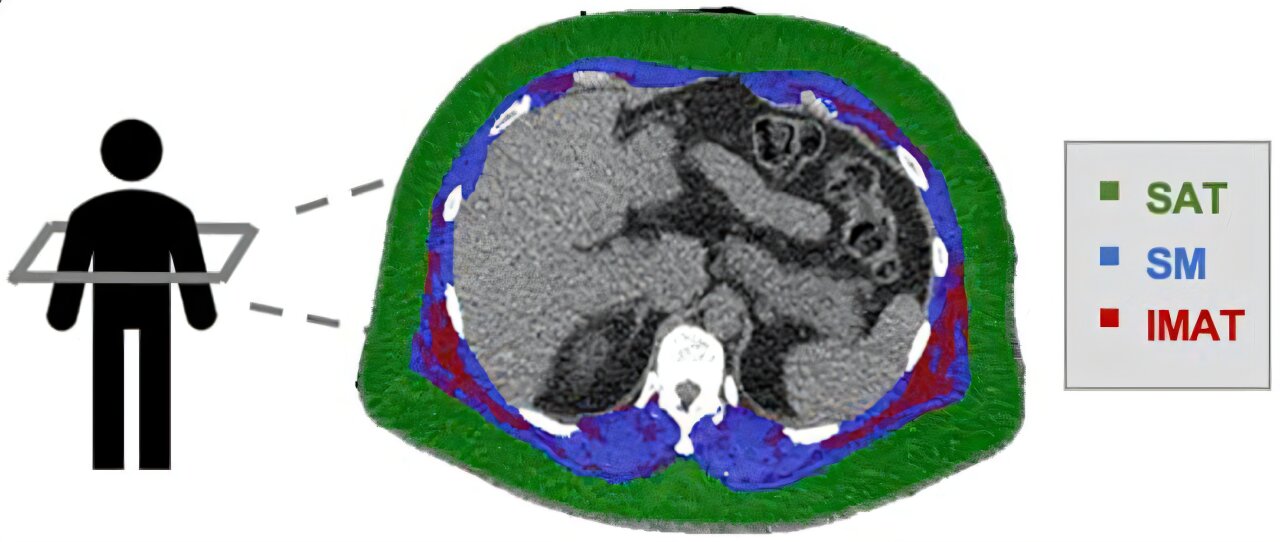A recent study published in the European Heart Journal has linked the accumulation of intermuscular fat, or fat deposited within skeletal muscles, to an increased risk of severe cardiovascular events such as heart attacks and heart failure, irrespective of a person’s body mass index (BMI).

The researchers used computed tomography to analyse each patient’s body composition, measuring the amount and location of fat and muscle in a specific area of the body. Subcutaneous adipose tissue = subcutaneous adipose tissue SM = skeletal muscle BMI = intermuscular adipose tissue. Source: Vivianty Taqueti / European Heart Journal
study highlighted that each 1% rise in intermuscular fat correlated with a 2% increase in the likelihood of cardiac microvascular dysfunction (CMD) and a 7% rise in heart-related complications. These findings underscore the unique role of intermuscular fat, which differs from subcutaneous fat by exacerbating inflammation, impairing glucose metabolism, and promoting insulin resistance.
Professor Vivianty Taqueti, the lead researcher, emphasized that current cardiovascular risk assessments should be expanded to consider intermuscular fat levels. The study revealed that patients with high CMD and elevated intermuscular fat were significantly more prone to heart attacks and heart failure. Conversely, greater muscle mass appeared to offer a protective effect against such events.
These results suggest promising avenues for treatment and prevention. Glucagon-like peptide-1 receptor agonists, known for their effects on weight and metabolism and tailored exercise programs, may help modulate intermuscular fat levels and reduce cardiovascular risk. However, as the researchers note, further investigation is essential to understand how these interventions influence body composition and heart health outcomes.
It is crucial to remember that while these findings highlight general trends, individual health risks and responses can vary. Consulting a healthcare provider remains essential for personalized cardiovascular risk assessment and management.






